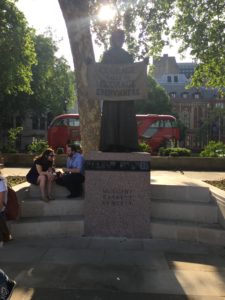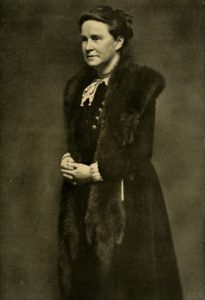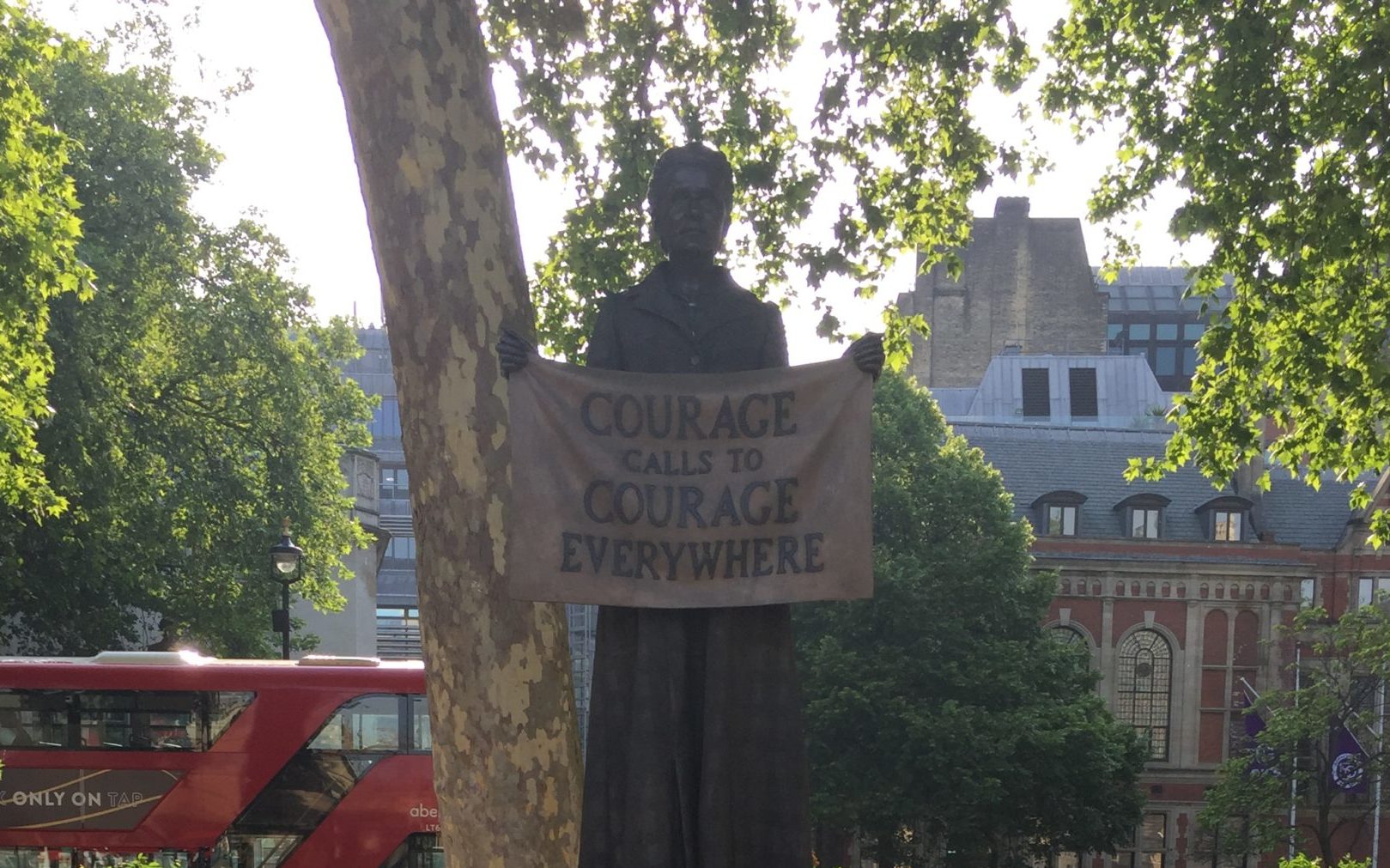11 June 1847 (Aldeburgh, Suffolk) – 5 August 1929 (London)
 Millicent Garrett Fawcett was a leader in the women’s suffrage movement in England, heading up the National Union of Women’s Suffrage Societies (NUWSS), but most Americans, at least, won’t have heard of her. I consider myself not a scholar of the UK and US suffragist movements but an enthusiast, and I had never heard of her before seeing this monument to her in Parliament Square Garden in Westminster in London. (I was there shortly after it was erected, making Fawcett the first woman honored by a statue there.)
Millicent Garrett Fawcett was a leader in the women’s suffrage movement in England, heading up the National Union of Women’s Suffrage Societies (NUWSS), but most Americans, at least, won’t have heard of her. I consider myself not a scholar of the UK and US suffragist movements but an enthusiast, and I had never heard of her before seeing this monument to her in Parliament Square Garden in Westminster in London. (I was there shortly after it was erected, making Fawcett the first woman honored by a statue there.)
Unlike her internationally more famous contemporaries, the Pankhursts (leaders of the Women’s Social and Political Union (WSPU)), Millicent was against militant action and took a more moderate stance, advocating for “…[the] principle of supporting our movement only by argument, based on common sense and experience and not by personal violence or lawbreaking of any kind” (from What I Remember by Fawcett, 1924).
The NUWSS was by far the larger suffragist organization, but the WSPU got the press and the long-term fame due to their militant tactics. (Side-note I do not blame them for getting aggressive in pursuit of the vote after so many long years of struggle, but I think Christabel is overpraised and was a glory-hound. I am generally Team Sylvia.)
Millicent also fought for human rights on a larger scale and did work that focused on preventing child abuse at a time when children were seen as having no individual rights within their families. She was not always on the right side of history, and when the government sent her to investigate the conditions British concentration camps for Boer civilians, she supported the original whistle-blower Emily Hobhouse’s findings but defended the administration against being held responsible which seems unlikely! She also opposed Irish Home Rule for nonsense British Imperial reasons, which… shakes head at her in disapproval.
 During WWI, Millicent and the NUWSS did not suspend the fight for the vote as the WSPU did nor did they participate with the jingoistic fervor Christabel Pankhurst brought to the table in supporting the war effort (with her cruel white feathers and speeches about the German Peril). Instead, Millicent focused the NUWSS’s efforts on supporting hospital services in training camps and in various locations in the larger theater of war. Millicent herself was not a pacifist but as her group contained many who were, she did not wish to split the organization by committing it to the cause of war.
During WWI, Millicent and the NUWSS did not suspend the fight for the vote as the WSPU did nor did they participate with the jingoistic fervor Christabel Pankhurst brought to the table in supporting the war effort (with her cruel white feathers and speeches about the German Peril). Instead, Millicent focused the NUWSS’s efforts on supporting hospital services in training camps and in various locations in the larger theater of war. Millicent herself was not a pacifist but as her group contained many who were, she did not wish to split the organization by committing it to the cause of war.
She made use of women’s participation in all aspects of the war effort to continue to argue for the vote, helping to win support for the Representation of the People Act of 1918. This act extended the right to vote to women for the first time as well as expanding the vote in various kinds of elections to men who had previously been excluded (eg for not being land-owners) as well as to women. As with the 19th Amendment in the US, this was not a comprehensive, final right-to-vote law, but it was the first major step toward universal suffrage (a journey we are all still on, sadly).
Millicent was married to Henry Fawcett from 1867 until his early death in 1884 and after that devoted herself to her activism. The couple had one child together, a daughter who became known in her own right as a celebrated mathematician. Millicent’s oldest sister Elizabeth was also the first woman to qualify as a physician and surgeon in England (the Garrett-Fawcett women were formidable). Toward the end of her life, Millicent was knighted in the 1925 New Year Honours in recognition for her work (Dame Grand Cross of the Order of the British Empire).
After a long life of political and social activism, Millicent died at the age of 82. She was cremated and her ashes scattered at the Golders Green Crematorium (London). There is no grave to visit, but aside from the statue pictured, there are several memorials honoring her memory including an English Heritage blue plaque marking the home in London where she lived until her death, a memorial inside Westminster Abbey alongside that of her husband, and Millicent Fawcett Hall in Westminster.
Millicent was highly-accomplished beyond her suffragist and human rights advocacy, and I recommend the Wikipedia article as a good place to start learning more about her.
Please visit my Instagram for any questions or comments on this post!
References
- Millicent Fawcett on Wikipedia
- Millicent Fawcett’s writings are available online on the following and other sites that host public domain content:
- Project Gutenberg
- LibriVox, and other sites that host public domain content.
- What I Remember on FadedPage.com
